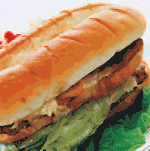 A Hard Look at a Light Beer's Marketing Strategy
A Hard Look at a Light Beer's Marketing StrategyBy
Al RiesPublished: September 17, 2006
From
AdageYears ago, I was invited to Amsterdam to make a presentation to the marketing staff at Heineken. We'd like you to come back every year to keep us up-to-date on marketing trends, I was told.
Heineken, which owns the Amstel brand, has launched Heineken Premium Light, which directly competes against Amstel. Does this make sense?
Sacred cowsThat invitation lasted for about an hour and a half. As soon as I reached the law of line extension in my presentation, the faces in the room clouded up and I knew I was on the wrong side of one of their sacred cows.
Why are so many marketing people enamored with line extensions when history shows that line-extension successes are mostly "illusions."
Which brings us to Heineken and its recent launch of Heineken Premium Light. What is astounding about this move is that Heineken already has an imported light beer in the American market, Amstel Light. Why would you want to compete with yourself?
Corona LightAs a matter of fact, Amstel Light is the largest-selling imported light beer in the U.S. until recently when it was passed by Corona Light.
Which proves, of course, that a line extension is better that a new brand. Or does it? How successful is Corona Light?
If you look at the numbers, not very. Corona Extra outsells Corona Light 11 to 1. (The confusion factor between Extra and Light is probably responsible for some of Corona Light's sales.)
Companies tend to treat a line extension as a separate brand when logic suggests that consumers see a strong connection between the base brand and the extension. (Diet Coke is widely perceived as regular Coke with the sugar replaced by an artificial sweetener.)
Like a teeter-totterThis connection is like a teeter-totter. When the extension goes up, the base brand goes down. Sometimes dramatically. The success of Miller Lite just about killed Miller High Life. And the same thing happened with Coors Light and regular Coors.
While line extensions seldom work, what almost always works in marketing is being first. After the repeal of Prohibition in 1933, Heineken was the first imported beer to enter the U.S. market. And Amstel Light was the first imported light beer.
Heineken was the first imported beer to race into the U.S. market when Prohibition was repealed. Being first was a key factor in the brand's long-term success here.
The power of being first in the mind is so overwhelming that you can do almost everything else wrong and still be successful. Let's look at Amstel Light.
Naming mistakeHeineken made a mistake with the name. They should have just called the brand "Amstel." The "Light" implied that the brand was a line extension when it was not. (At least, not in the U.S.)
Later, they also line-extended the brand, confusing everybody. In addition to Amstel Light, they tried to sell Amstel Bier, a lager, and Amstel 1870, a pilsner. This couldn't possibly work and it didn't.
Being first is the most important move you can make in marketing, but it's not everything. To assure your brand's longevity, you should add a conceptual idea that attests to the brand's leadership and authenticity -- like Budweiser's "King of Beers" or Nike's "Just do it."
Memorable and meaningful sloganEvery big beer brand usually has some favorable association. Coors is brewed with "Rocky Mountain spring water." Miller is associated with "Miller Time." Samuel Adams is the "microbrewed" beer.
But what's an Amstel Light? What memorable slogan does your average beer drinker associate with Amstel Light?
Live tastefully? The brand's latest slogan sounds more like a strategy for a clothing brand rather than a beer brand. Prior to that, Amstel Light was the "Beer drinker's light beer." (I thought the beer drinker's light beer was Bud Light.)
Corona Light now outsells Amstel Light, depriving Amstel of its previous claim to category leadership.
In the 25 years that Amstel Light has been on sale in the U.S. market, the brand has failed to associate itself with any motivating idea or concept. Now that Corona Light outsells Amstel Light, the brand can't even claim the leadership position in imported light beer.
Heineken's weak sloganFor that matter, what's a Heineken? Their current slogan, "It's all about the beer," doesn't define the brand in any meaningful way.
In Colombia, Heineken has used the slogan "La cerveza más famosa del mundo" ("The most famous beer in the world"). Not a bad idea for the leading imported beer in many countries.
Then there's the Heineken campaign that tried to associate the red star on the bottle with the brand. Typical billboard headline: "Stare at this for a long time and you'll see a red star."
A red star? Why in the world would Heineken want to use a Russian symbol for a Dutch beer? (Would a Russian beer use a tulip as a visual symbol?)
The power of colorFurthermore, Heineken has a unique color (green) that it never has taken full advantage of. Color can be a very effective branding device. Tiffany has blue. UPS has brown.
What the green jacket has done for the Masters golf tournament, the green bottle could have done for Heineken.
If you want to build a successful long-term brand, for a beer or any other product, you can't go wrong by following two simple rules. (1) Be first. (2) Rub it in with an anthem that resonates with consumers.
And go light on line extensions.
~ ~ ~
Al Ries is the author or co-author of 11 books on marketing, including his latest, The Origin of Brands. He and his daughter Laura run the Atlanta-based marketing strategy firm Ries & Ries. Their website is Ries.com.








